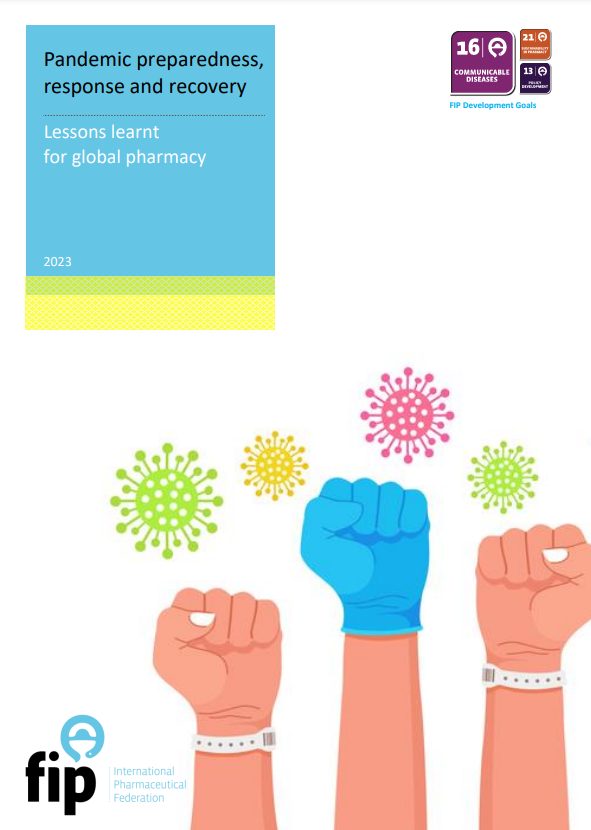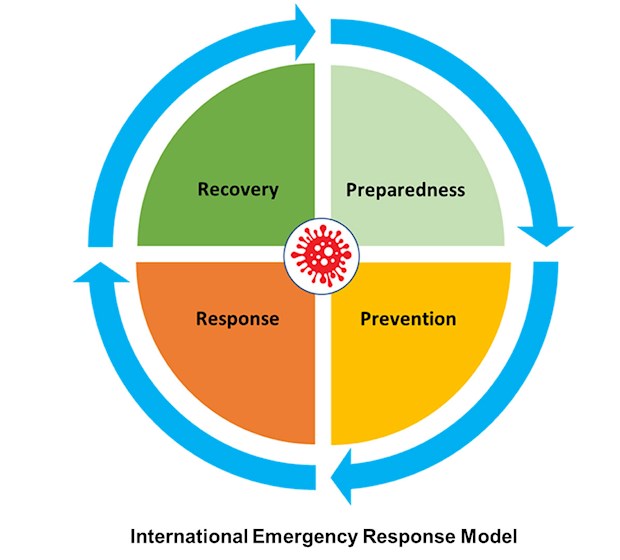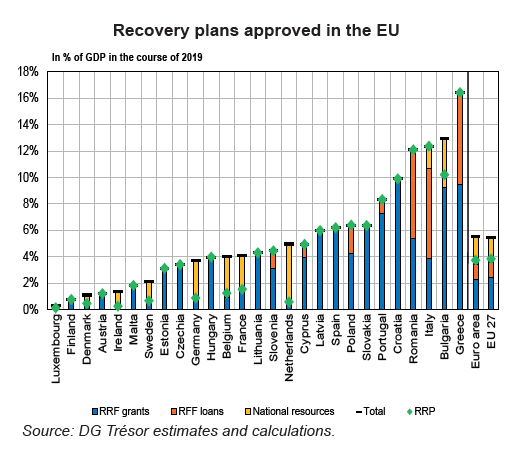Global Readiness: Strengthening for Future Pandemics

Strengthening Resilience: Global Readiness for Future Pandemics
The ongoing global pandemic has underscored the importance of global preparedness for health crises. In this article, we explore the initiatives and strategies employed to enhance global pandemic preparedness, ensuring a more resilient response to future challenges.
Lessons from the Current Crisis: Informing Future Strategies
The current global health crisis has provided invaluable lessons in the importance of preparation. Understanding these lessons forms the foundation for future strategies, emphasizing the need for a proactive approach in addressing potential pandemics before they escalate.
International Collaboration: Building a Unified Front
One of the pillars of global pandemic preparedness is international collaboration. Countries, organizations, and research institutions must work together to share information, resources, and expertise. Building a unified front fosters a collective response that transcends borders, ensuring a faster and more coordinated reaction to emerging health threats.
Investing in Public Health Infrastructure: A Long-Term Commitment
Global pandemic preparedness requires sustained investment in public health infrastructure. This includes bolstering healthcare systems, establishing robust surveillance mechanisms, and ensuring an adequate supply of medical resources. A long-term commitment to strengthening these foundations is essential for effectively managing and containing future outbreaks.
Research and Development: Advancing Vaccine Technologies
Advancements in vaccine technologies are pivotal for global readiness. Ongoing research and development efforts focus on creating adaptable and scalable vaccine platforms. Investing in these technologies allows for quicker vaccine development and deployment when facing novel pathogens, minimizing the impact of emerging health threats.
Surveillance and Early Warning Systems: Anticipating Challenges
Early detection is crucial in pandemic preparedness. Surveillance and early warning systems, both domestically and internationally, play a key role in anticipating and identifying potential health challenges. These systems enable rapid response measures, helping to contain outbreaks before they reach catastrophic levels.
Capacity Building in Developing Nations: Ensuring Equitable Preparedness
Global readiness is only as strong as its weakest link. Capacity building in developing nations is a critical aspect of preparedness. This involves providing resources, training healthcare professionals, and establishing sustainable healthcare infrastructures to ensure that all nations can effectively respond to health crises.
Education and Awareness: Empowering Communities
An informed and aware population is a formidable asset in global pandemic preparedness. Education initiatives that focus on preventive measures, early symptoms recognition, and community resilience empower individuals to actively participate in their own well-being. Building a culture of awareness enhances the overall effectiveness of global health responses.
Global Governance and Coordination: Strengthening Institutions
Effective global pandemic preparedness requires strong governance and coordination. Strengthening international institutions, such as the World Health Organization (WHO), and establishing clear protocols for collaboration and decision-making ensure a cohesive and unified global response to health emergencies.
Public-Private Partnerships: Harnessing Innovation and Resources
Engaging public-private partnerships is a key strategy in global pandemic preparedness. Collaborating with the private sector brings innovation, resources, and efficiency to the table. These partnerships facilitate the development of new technologies, the production of medical supplies, and the distribution of vaccines on a global scale.
Looking Ahead: A Resilient Future
As the world grapples with the current pandemic, global pandemic preparedness emerges as a collective responsibility. By learning from the present challenges, fostering international collaboration, investing in infrastructure, and empowering communities, the global community can build a more resilient future that is better equipped to face and overcome emerging health threats.
For more insights on global pandemic preparedness, visit Global Pandemic Preparedness.
Analyzing Pandemic Impact: Insights and Strategies

Analyzing Pandemic Impact: Insights and Strategies
The profound effects of the pandemic have necessitated a comprehensive analysis of its impact on various facets of society. In this article, we delve into the critical aspects of pandemic impact analysis, offering insights and strategies to navigate the challenges and pave the way for recovery.
Economic Landscape: Unraveling the Financial Fallout
One of the primary areas demanding attention in pandemic impact analysis is the economic landscape. Lockdowns, business closures, and disruptions to supply chains have led to widespread financial challenges. Analyzing the economic impact helps in identifying sectors most affected, understanding unemployment trends, and formulating strategies for economic recovery.
Healthcare Systems Strain: Assessing the Impact on Public Health
The strain on healthcare systems has been a critical aspect of the pandemic’s impact. An in-depth analysis is crucial for understanding the capacity challenges, resource deficiencies, and lessons learned in managing public health crises. This assessment informs strategies for fortifying healthcare infrastructures and preparedness for future health emergencies.
Remote Work Dynamics: Transforming the Workforce Landscape
The shift towards remote work has been a significant change in the workforce landscape. Pandemic impact analysis should focus on evaluating the effectiveness of remote work arrangements, identifying challenges faced by employees, and considering the long-term implications for work policies and organizational structures.
Education Disruptions: Navigating the Learning Curve
The pandemic has disrupted traditional education models, leading to widespread closures and a surge in remote learning. An analysis of the impact on education involves assessing the effectiveness of virtual learning, understanding the digital divide, and devising strategies to enhance educational resilience in the face of future disruptions.
Mental Health Toll: Recognizing the Psychological Impact
The pandemic has taken a toll on mental health globally. Pandemic impact analysis should include an evaluation of the psychological impact, recognizing increased stress, anxiety, and depression. Strategies for mental health support, destigmatization, and integrating mental health into public health policies become imperative for overall well-being.
Supply Chain Resilience: Adapting to Global Disruptions
The pandemic revealed vulnerabilities in global supply chains. Analysis of the impact involves identifying bottlenecks, assessing dependencies, and formulating strategies to enhance supply chain resilience. This analysis informs businesses and governments about diversification, local sourcing, and risk mitigation measures.
Social Dynamics and Inequalities: Addressing Disparities
The pandemic exacerbated existing social inequalities and created new challenges. Analysis should focus on understanding disparities in healthcare access, economic impact on marginalized communities, and the widening education gap. Strategies for addressing these inequalities become crucial for building a more equitable and inclusive society.
Technology Adoption: Accelerating Digital Transformations
The pandemic accelerated the adoption of digital technologies. Impact analysis involves evaluating the effectiveness of digital tools, identifying areas for improvement, and understanding the role of technology in crisis management. This analysis informs future digital strategies for businesses, governments, and educational institutions.
Lessons Learned: Shaping Future Preparedness
Pandemic impact analysis serves as a foundation for lessons learned. Identifying strengths, weaknesses, and areas for improvement informs future preparedness strategies. The insights gained contribute to building a more resilient and adaptive global community capable of navigating future challenges.
Moving Forward: Strategies for Recovery and Resilience
In the aftermath of thorough pandemic impact analysis, the focus shifts to recovery and resilience. Strategies may include targeted economic stimulus, investments in healthcare infrastructure, mental health support programs, and technology-driven innovations. Collaborative efforts based on the analysis pave the way for a more resilient and prepared future.
For more insights on pandemic impact analysis, visit Pandemic Impact Analysis.
Global Impact: Navigating the Worldwide Pandemic Challenge

Understanding the Ripple Effect: Navigating the Worldwide Pandemic Impact
The ongoing worldwide pandemic has left an indelible mark on societies, economies, and daily lives across the globe. Examining the multifaceted impact of the pandemic provides insights into the challenges faced, the resilience displayed, and the strategies employed to navigate these unprecedented times.
Healthcare Systems Under Strain: A Global Challenge
One of the most profound impacts of the worldwide pandemic has been the strain on healthcare systems globally. Hospitals faced surges in patient numbers, shortages of critical medical supplies, and the immense pressure on healthcare professionals. The collective challenge underscored the necessity for robust and adaptable healthcare infrastructures.
Economic Disruptions: Ripples Across Industries
The economic fallout of the pandemic has been felt in every corner of the world. Industries faced disruptions, businesses closed, and unemployment rates soared. Governments implemented economic stimulus packages to mitigate financial hardships, highlighting the need for innovative strategies to sustain economies in the face of global uncertainty.
Education Transformations: Adapting to New Learning Realities
The worldwide impact extended to the education sector, where schools and universities faced closures and shifted to remote learning. The digital divide became more apparent, emphasizing the importance of accessible and inclusive education. Adapting to new learning realities required educators, students, and institutions to innovate and overcome unprecedented challenges.
Remote Work Revolution: Redefining Work Norms
The worldwide pandemic prompted a paradigm shift in work norms, with remote work becoming the new standard. Organizations embraced digital transformation, introducing flexible work arrangements and virtual collaboration tools. The remote work revolution reshaped the dynamics of the workforce and emphasized the importance of adaptability in navigating global challenges.
Global Supply Chain Disruptions: Unveiling Vulnerabilities
The interconnectedness of the global economy became evident as supply chains faced disruptions. From manufacturing to distribution, vulnerabilities in the global supply chain were unveiled. This realization prompted a reassessment of supply chain strategies, emphasizing the need for resilience and flexibility in the face of unforeseen global disruptions.
Mental Health Challenges: A Universal Concern
The worldwide impact of the pandemic extended to mental health, with individuals facing increased stress, anxiety, and feelings of isolation. The universal nature of these challenges emphasized the need for global initiatives to address mental health stigma, provide support, and promote well-being on a broad scale.
Community Resilience: Strengthening Social Bonds
Communities worldwide demonstrated remarkable resilience in the face of adversity. Mutual aid initiatives, volunteerism, and community support networks emerged as essential components of navigating the challenges posed by the pandemic. The strength of social bonds and community resilience became pillars of support during uncertain times.
International Collaboration: A Collective Response
The worldwide impact necessitated unprecedented levels of international collaboration. Countries, organizations, and researchers collaborated on vaccine development, information sharing, and resource allocation. The global response highlighted the importance of solidarity and collective action in addressing a shared global threat.
Building a Resilient Future: Lessons Learned
As the world grapples with the ongoing challenges of the worldwide pandemic, the lessons learned are instrumental in building a resilient future. From reinforcing healthcare systems to reimagining work and education, the global impact prompts a collective commitment to fostering adaptability, innovation, and global cooperation for a more sustainable world.
For more insights into the worldwide pandemic impact, visit Worldwide Pandemic Impact.
Rebuilding Stronger: Effective Pandemic Recovery Plans
Rebuilding Stronger: Crafting Effective Pandemic Recovery Plans
The aftermath of a pandemic necessitates strategic recovery plans to rebuild and strengthen communities. In this article, we delve into the elements of effective pandemic recovery plans, emphasizing resilience, innovation, and a collective commitment to emerging stronger from the challenges faced.
Assessment and Reflection: Understanding the Impact
The foundation of any effective pandemic recovery plan lies in a thorough assessment of the impact. Reflecting on the economic, social, and health consequences allows for a nuanced understanding of the challenges ahead. This phase involves collaboration between policymakers, experts, and community stakeholders to gather insights for informed decision-making.
Economic Revitalization: Stimulus and Support Measures
One key aspect of pandemic recovery plans is the revitalization of the economy. Governments implement stimulus packages and support measures to jumpstart economic activities. These measures may include financial aid for businesses, job creation initiatives, and investments in key sectors to fuel economic growth and stability.
Healthcare Infrastructure Reinforcement: Learning from the Crisis
The pandemic exposed vulnerabilities in healthcare systems globally. Recovery plans prioritize reinforcing healthcare infrastructure to better handle future health crises. This involves investing in medical facilities, ensuring an adequate supply of medical resources, and enhancing research and development capabilities to stay ahead of emerging health challenges.
Innovation and Adaptation: Paving the Way Forward
An essential component of recovery plans is fostering innovation and adaptation. Businesses, educational institutions, and communities must embrace new ways of operating. Innovation in technology, healthcare delivery, and education ensures resilience in the face of uncertainties, laying the groundwork for a more adaptable and robust future.
Community Engagement: Building Social Cohesion
Recovery plans prioritize community engagement as a cornerstone for rebuilding. Fostering social cohesion involves engaging communities in decision-making processes, addressing concerns, and promoting inclusivity. Strong community bonds contribute to a collective sense of purpose, making recovery efforts more effective and sustainable.
Environmental Sustainability: A Focus on Resilient Futures
Pandemic recovery plans recognize the importance of environmental sustainability. Embracing eco-friendly practices and investing in sustainable infrastructure contribute to building resilience against future crises. Balancing economic recovery with environmental stewardship ensures a more sustainable and resilient future for generations to come.
Education Transformation: Adapting to New Norms
Recovery plans acknowledge the transformative impact on education. Adapting to new norms involves investing in technology for remote learning, providing support for educators, and addressing the educational inequalities highlighted by the pandemic. This transformative approach ensures a resilient and inclusive education system.
Psychosocial Support: Addressing Mental Health Challenges
The pandemic has taken a toll on mental health globally. Effective recovery plans include provisions for psychosocial support, recognizing the need to address mental health challenges. Initiatives may involve accessible mental health services, community support networks, and destigmatizing mental health issues for a healthier society.
Global Cooperation: Solidarity in Recovery
Pandemic recovery plans extend beyond national borders. Global cooperation is essential for sharing resources, expertise, and best practices. Collaborative efforts between countries, international organizations, and global initiatives strengthen the collective response to the pandemic aftermath, fostering a sense of global solidarity.
Resilience Building for the Future: Lessons Learned
As communities implement pandemic recovery plans, it is vital to incorporate lessons learned for resilience building. This involves creating frameworks for future crisis management, prioritizing data-driven decision-making, and instilling a culture of preparedness. Recovery plans become a roadmap for not just rebuilding but also for fortifying against future uncertainties.
For more insights on effective pandemic recovery plans, visit Pandemic Recovery Plans.
Navigating Pandemic Challenges: Strategies for Coping

Navigating Pandemic Challenges: Strategies for Coping
The ongoing pandemic has presented unprecedented challenges, affecting individuals globally. In this article, we explore effective strategies for coping with the various aspects of the pandemic, including mental health, lifestyle adjustments, and maintaining resilience in the face of uncertainty.
Understanding the Mental Health Impact: Prioritizing Well-being
One of the foremost challenges during the pandemic is the impact on mental health. Uncertainty, isolation, and fear can take a toll on emotional well-being. Coping strategies involve prioritizing mental health, seeking support when needed, and recognizing the importance of self-care practices to navigate these challenging times.
Establishing Routine and Structure: Creating Stability Amidst Chaos
The disruption caused by the pandemic has led to a sense of chaos and unpredictability. Establishing a routine and structure in daily life can provide stability. Creating a schedule that incorporates work, leisure, and self-care activities helps individuals regain a sense of control and normalcy in their lives.
Embracing Lifestyle Adjustments: Adapting to the New Normal
The pandemic has necessitated lifestyle adjustments to comply with safety measures. Coping involves embracing these changes, whether in work arrangements, social interactions, or daily routines. Finding innovative ways to stay connected virtually and adapting to new norms contribute to a more resilient approach to the challenges at hand.
Fostering Social Connections: Combating Isolation
Social isolation has been a significant challenge during the pandemic. Coping strategies include fostering social connections, even if it’s through virtual means. Regular communication with friends and family, participating in online communities, and engaging in virtual events help combat feelings of loneliness and isolation.
Physical Well-being: Integrating Health Practices
Physical well-being is integral to coping with the pandemic. Incorporating health practices, such as regular exercise, balanced nutrition, and sufficient sleep, contributes to overall resilience. Prioritizing physical health not only strengthens the immune system but also positively impacts mental and emotional well-being.
Limiting Information Overload: Managing News Consumption
Constant exposure to pandemic-related news can contribute to anxiety and stress. Coping involves managing information consumption by setting boundaries on news exposure. Selecting reliable sources, scheduling designated times for updates, and taking breaks from news consumption contribute to a healthier mental state.
Seeking Professional Support: A Vital Resource for Coping
In challenging times, seeking professional support is a valuable coping resource. Mental health professionals, counselors, and support hotlines offer assistance and guidance. Recognizing the importance of reaching out for professional help when needed is a crucial aspect of building resilience during the pandemic.
Cultivating Hobbies and Interests: Finding Joy Amidst Challenges
Engaging in hobbies and interests is a powerful coping mechanism. Whether it’s a creative pursuit, a recreational activity, or learning something new, cultivating hobbies provides a source of joy and distraction. These activities serve as outlets for self-expression and contribute to overall well-being.
Mindfulness and Stress Reduction: Techniques for Relaxation
Mindfulness practices and stress reduction techniques are effective coping tools. Incorporating activities such as meditation, deep breathing exercises, and mindfulness meditation into daily routines helps manage stress levels. These techniques promote a sense of calm and contribute to mental and emotional resilience.
Building Resilience for the Future: Lessons Learned
As individuals navigate the challenges of the pandemic, the experience becomes an opportunity to build resilience for the future. Coping involves recognizing the lessons learned, adapting to changing circumstances, and fostering a mindset of growth and adaptability. Embracing these lessons contributes to a more resilient and prepared outlook.
For more insights on coping with the pandemic, visit Coping with Pandemic.
Navigating the Global Pandemic: A Comprehensive Overview

Understanding the Landscape: A Comprehensive Overview of the Global Pandemic
The global pandemic has transformed the world in unprecedented ways, affecting every aspect of our lives. To navigate this complex landscape, it’s essential to delve into a comprehensive overview that covers the origins, impact, challenges, and strategies employed in the face of the ongoing global pandemic.
Origins and Spread: Tracing the Beginnings of the Pandemic
The roots of the global pandemic trace back to the emergence of a novel coronavirus, SARS-CoV-2. Believed to have originated in bats, the virus made a zoonotic jump to humans, leading to the first recorded cases of COVID-19 in late 2019. Rapid international travel facilitated the swift global spread of the virus, marking the beginning of a challenging era.
Global Impact: Unprecedented Challenges Across Continents
The impact of the pandemic has been felt worldwide, transcending borders and affecting diverse communities. From overwhelmed healthcare systems to economic downturns, the global repercussions have been unprecedented. Understanding the multifaceted impact is crucial for formulating effective responses and building resilience on a global scale.
Healthcare Responses: Battling the Pandemic on the Frontlines
Healthcare systems globally have been thrust onto the frontlines in the battle against the pandemic. Hospitals faced surges in patient numbers, shortages of critical medical supplies, and the urgent need for vaccine development. The tireless efforts of healthcare professionals have been instrumental in saving lives and mitigating the spread of the virus.
Economic Turmoil: Navigating Financial Challenges
The economic fallout of the global pandemic has been substantial, with businesses closing, unemployment rates soaring, and supply chains disrupted. Governments worldwide implemented stimulus packages and economic relief measures to cushion the financial impact. Navigating these economic challenges requires innovative solutions and international collaboration.
Technological Resilience: The Role of Innovation in Crisis Response
Technology played a pivotal role in responding to the global pandemic. From rapid vaccine development to the transition to remote work, innovative solutions emerged to address various challenges. The pandemic accelerated the adoption of digital tools, showcasing the resilience and adaptability of societies in the face of unprecedented change.
Challenges in Education: Adapting to New Learning Realities
The education sector faced significant disruptions, with widespread closures of schools and universities. The shift to online learning highlighted existing disparities in access to education. Adapting to new learning realities, educators and students alike navigated the challenges of remote education, emphasizing the need for inclusive and accessible educational approaches.
Global Cooperation: Collaborative Efforts for Solutions
The global pandemic underscored the importance of international cooperation in combating a shared threat. Collaborative efforts in vaccine development, information sharing, and resource allocation showcased the strength of unity. Global organizations, governments, and communities worked together to find solutions and navigate the complexities of the pandemic.
Vaccine Rollouts: A Beacon of Hope in the Pandemic Journey
The development and distribution of vaccines became a pivotal milestone in the pandemic journey. Vaccine rollouts aimed to achieve widespread immunity and bring an end to the crisis. Challenges in vaccine distribution and hesitancy highlighted the importance of equitable access and public education to ensure the success of vaccination campaigns.
Looking Ahead: Lessons Learned and Building Resilience
As the world continues to grapple with the global pandemic, reflecting on lessons learned is crucial for building resilience and preparing for the future. From enhancing healthcare infrastructure to addressing systemic inequalities, the pandemic prompts societies to rethink priorities and work collaboratively towards a more resilient and equitable world.
For more insights into the global pandemic overview, visit Global Pandemic Overview.







